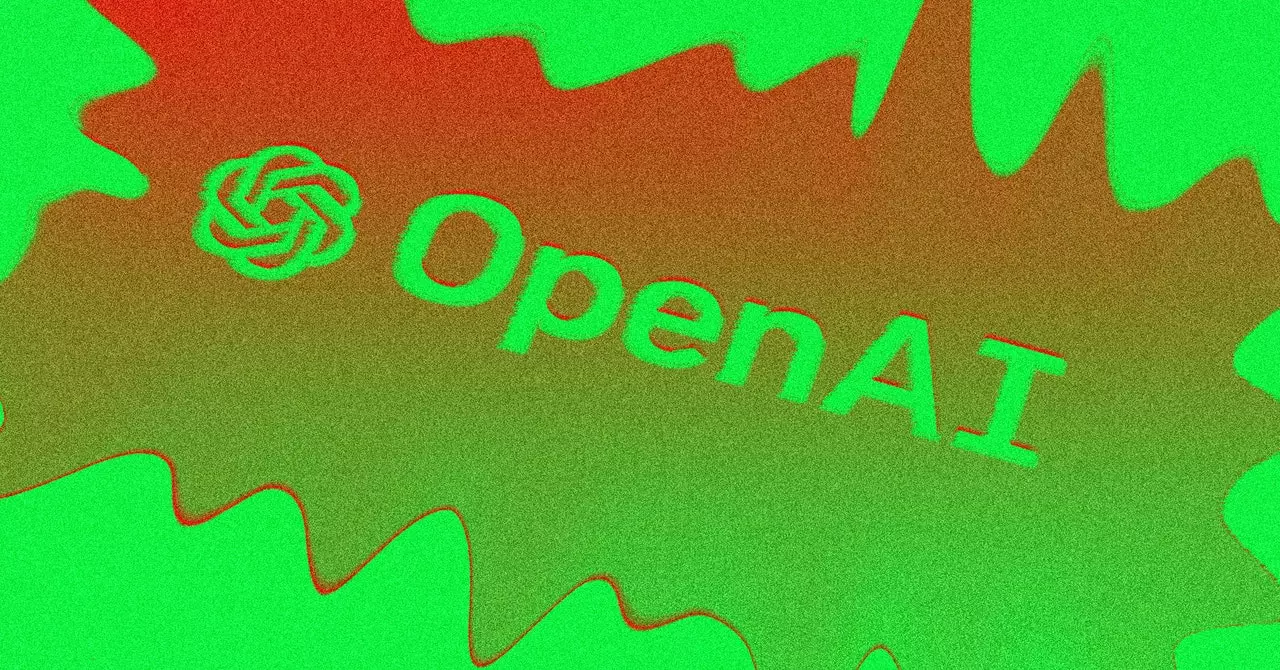In the ever-evolving landscape of artificial intelligence, innovation is not just a badge of honor; it’s a necessity for survival. OpenAI, a leader in AI technology, is pivoting its strategies in response to heightened competition, particularly with the recent developments from the Chinese startup DeepSeek. As OpenAI gears up to release its latest creation, o3-mini, a closer examination reveals the implications of this move for the broader AI ecosystem.
Anticipation and Technological Advancements
The forthcoming model, o3-mini, represents a significant leap in what smaller AI systems can achieve. With the promise of high efficiency and advanced reasoning capabilities, this new model is designed to tackle complex problems more adeptly than any previous offerings from OpenAI. The excitement surrounding its release has been palpable, especially following months of speculation and development.
Sources indicate that OpenAI’s team, consisting of researchers and PhD students dedicated to refining this model, has been working diligently to prepare o3-mini for launch. The model is not merely a scaled-down version of its predecessors; it employs novel methods to disassemble difficult problems, leading to more effective solutions. As OpenAI states, this model is set to “advance the boundaries of what small models can achieve,” effectively highlighting the company’s commitment to pushing technological limits.
The release of o3-mini comes at a critical juncture when the AI field is witnessing intense competition. DeepSeek’s R1 model has made waves across major tech firms, generating requisite pressure for other competitors to take a hard look at their offerings and pricing strategies. DeepSeek’s efficient use of resources has spawned discussions over cost-effectiveness and performance in AI development; thus, OpenAI’s decision to release o3-mini for free to certain user tiers is strategic in maintaining relevance and leadership.
Moreover, with innovations becoming increasingly accessible, AI firms are compelled to rethink their pricing models and development approaches. The impending availability of o3-mini for Plus, Team, and Pro users of ChatGPT, along with limited access for free users, serves as OpenAI’s answer not only to customer demands but also to the competitive landscape painted by newcomers like DeepSeek.
Interestingly, OpenAI’s reliance on PhD students for training the new model illustrates a broader trend within the tech industry: the collaboration between academia and corporate researchers. This partnership has emerged as a vital avenue for rapid innovation, enabling firms like OpenAI to harness fresh expertise while fostering an environment of creative problem-solving. The recruitment of doctoral students for research collaborations at a competitive wage underscores OpenAI’s recognition of the value academic insights can offer, particularly in shaping the future of AI.
The complexity of the tasks assigned to these students, such as creating challenging scientific coding questions, speaks to the practical applications that o3-mini aims to address. Moreover, leveraging academic talent is a strategy that may well sustain OpenAI’s innovative edge against competitors, including those from countries with different strategic approaches to AI development.
Efficiency as a Core Value
Moving forward, efficiency is positioned as a top priority for OpenAI. In announcing the newest model’s capabilities, the company has emphasized its strengths in critical areas such as mathematics, science, and coding. New features, including web search integration and function calling from user code, hint at a model designed for practical user application, indicating a response not just to academic needs but real-world challenges as well.
Ultimately, while o3-mini may not outclass DeepSeek’s R1 in terms of pricing, OpenAI’s focus on efficiency places its model in a compelling light. The dynamics of AI technology are shifting, and such strategic focus may prove to be a game changer, fostering a renewed interest among users and encouraging intelligence-driven solutions.
Global Implications and Strategic Decisions
DeepSeek’s rise is not just a national challenge for U.S. tech firms; it raises significant questions regarding global AI dynamics and U.S. foreign policy. Recent administrations have implemented sanctions aimed at restricting Chinese access to advanced AI resources, including critical Nvidia chips. Observations of DeepSeek’s research suggest a complex relationship with these technological boundaries, as their successful model deployment calls into question the effectiveness of existing U.S. strategies.
As OpenAI embarks on this new chapter with o3-mini, it must navigate not only a competitive and rapidly evolving market but also the geopolitical landscape that shapes its operational framework. This model’s introduction symbolizes not just a technological endeavor but a broader assertion of commitment to innovation in the face of challenging circumstances.
OpenAI’s launch of o3-mini represents not only a tactical advancement in AI technology but a response to the shifting paradigms of competition, collaboration, and efficiency that define the current technological landscape. As the battle for AI supremacy heats up, adaptability and strategic foresight will prove crucial for all players involved.

